Abstract
Most of the congenital diaphragmatic hernia (CDH) cases are diagnosed at prenatal period or immediately after birth with severe respiratory symptom. The classic triad, which is respiratory distress, apparent dextrocardia and a scaphoid abdomen, is usually seen in this period. Several case reports have described older infants and children with a wide spectrum of symptoms of CDH, whereas extremely few cases were reported in neonatal period except classic triad such as straungulation of the bowel. These atypical manifestations can lead physician to delayed diagnosis. We report two cases of CDH newborns. First case was diagnosed with pneumoperitoneum following tension pneumothorax, transient diaphragm eventration on 5 days after birth. The other case was diagnosed with failure to thrive and mediastinal mass on 30 days after birth. These cases suggest physicians to consider CDH in late newborn period with pneumoperitoneum following tension pneumothorax, transient diaphragm eventration, failure to thrive, and mediastinal mass.
References
1. Song JE, Kwon OK, Kim YH, Lee HR. A case of late presenting congenital diaphragmatic hernia. Korean J Pediatr Gastroenterol Nutr. 2009; 12:246–50.

2. Gatea HK, T.Al-Gailani F, Abulhab RJ. Congenital diaphragmatic hernia: prevalence and management. Fac Med Baghdad. 2010; 52:380–4.
3. Yap KH, Jones M. Late presentation of congenital diaphragmatic hernia after a diagnostic laparoscopic surgery (a case report). J Cardiothorac Surg. 2013; 8:8.

5. Vega MT, Maldonado RH, Vega GT, Vega AT, Liévano EA, Velázquez PM. Late-onset congenital diaphragmatic hernia: a case report. Int J Sur Case Rep. 2013; 4:952–4.

6. Byun JM, Kim YN, Jeong DH, Lee KB, Sung MS, Kim KT, et al. A case of congenital right diaphragmatic eventration. Korean J Perinatol. 2009; 20:254–9.
7. Kotecha S, Barbato A, Bush A, Claus F, Davenport M, Delacourt C, et al. Congenital diaphragmatic hernia. Eur Respir J. 2012; 39:820–9.

8. Lemos SPP, Lemos PVRB, Coelho NALR, de Abrêu DM, Feitosa LBR. Congenital diaphragmatic hernia with delayed diagnosis: report of two cases. Case RMports in Clinical Medicine. 2015; 4:114.

9. Bianchi E, Mancini P, De Vito S, Pompili E, Taurone S, Guerrisi I, et al. Congenital asymptomatic diaphragmatic hernias in adults: a case series. J Med Case Rep. 2013; 7:125.

10. Singh TC, Singh CG, Lamare KN, Babitha N, Kharnaior A. Congenital diaphragmatic hernia in adult presenting with obstruction: a rare case. International Journal of Scientific Study. 2015; 2:142–5.
11. Baerg J, Kanthimathinathan V, Gollin G. Late-presenting congenital diaphragmatic hernia: diagnostic pitfalls and outcome. Hernia. 2012; 16:461–6.

12. Baglaj M. Late-presenting congenital diaphragmatic hernia in children: a clinical spectrum. Pediatr Surg Int. 2004; 20:658–69.
14. Josephsen JB, Klinkner DB, Kumar T, Al-Hosni M. Strangulated bowel as an unusual complication of neonatal congenital diaphragmatic hernia: a case report and literature review. J Pediatr Surg. 2013; 48:866–8.
15. Starshak RJ, Sty JR. Diaphragmatic defects with gastric volvulus in the neonate. Wis Med J. 1983; 82:28–31.
16. Esposito C, Settimi A, Centonze A, Savanelli A, Ascione G, De Marco M, et al. Bochdaleck diaphragmatic hernia, complicated by an antenatal gastric perforation, presenting as a pneumothorax and a perforative peritonitis. Pediatr Surg Int. 2008; 24:365–9.

17. Cserni T, Polonkai E, Torok O, Nagy A, Pataki I, Long AM, et al. In utero incarceration of congenital diaphragmatic hernia. J Pediatr Surg. 2011; 46:551–3.

18. Khemakhem R, Haggui B, Rahay H, Nouira F, Charieg A, Ghorbel S, et al. Congenital diaphragmatic hernia in neonate: a retrospective study about 28 observations. Afr J Paediatr Surg. 2012; 9:217–22.

Fig. 1.
(A) Chest radiograph after birth. Chest X-ray shows tension pneumothorax, pneumomediastinum and free air in abdomen. (B) Chest radiograph at postnatal age of 48 hours shows improved tension pneumothorax, pneumomediastinum and free air in abdomen. (C) Chest radiograph at postnatal age of 4days shows abnormal finding of left side diaphragm, suggests diaphragmatic eventration. (D) Chest radiograph at postnatal age of 5 days. It shows air-filled bowels loops in the left hemi thorax shifting the mediastinum to the right. Displacement of the trachea and heart to the right suggesting a space occupying process in the left hemithorax.
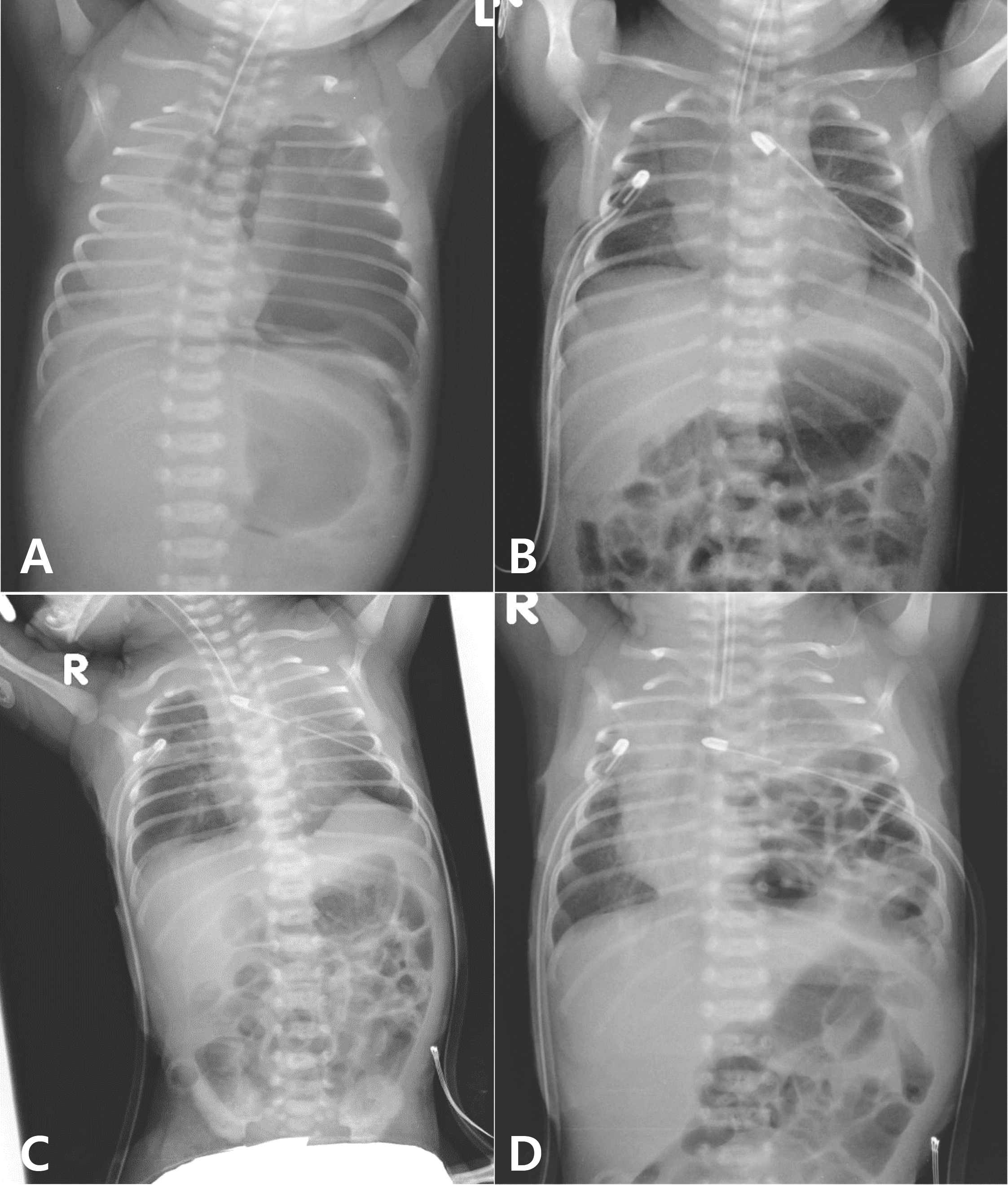
Fig. 2.
Operative findings show stomach through the ante− rolateral defects sized 2 cm in the left hemidiaphragm.
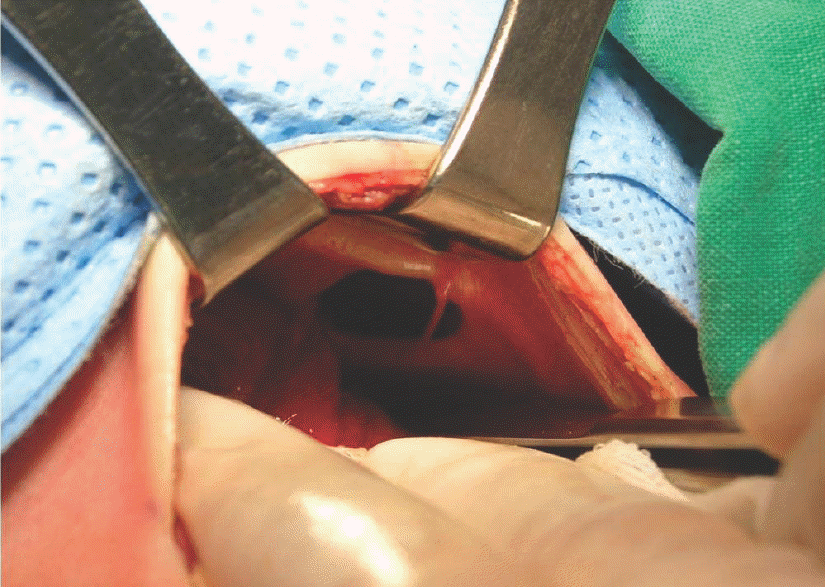
Fig. 3.
Chest radiograph at postnatal age of day 33. Chest X-ray shows cardiomegaly and a posterior mass in the right thorax.
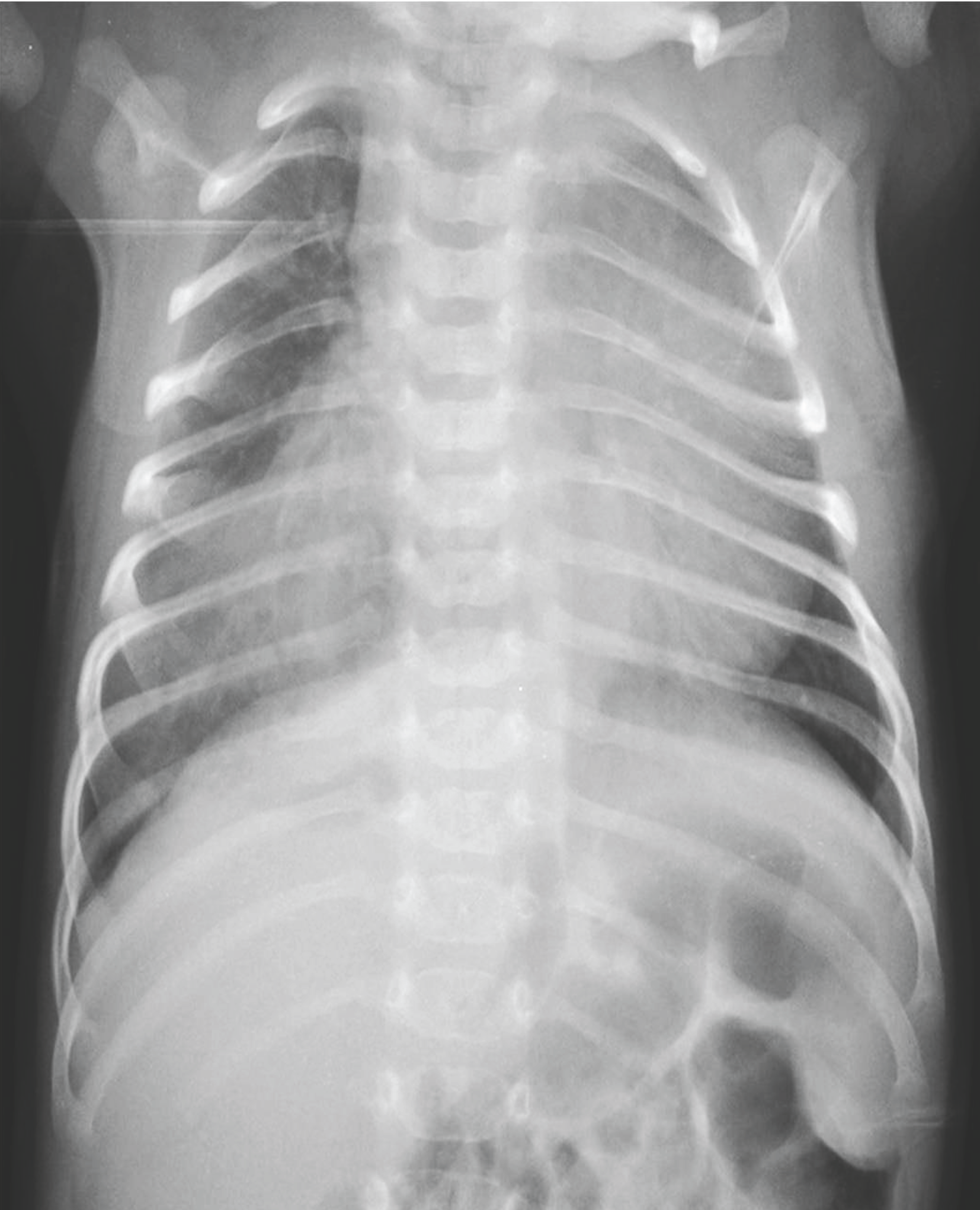
Fig. 6.
Herniation of stomach and small bowel loops is seen on U.G.I (Upper Gastrointestinal Studies).
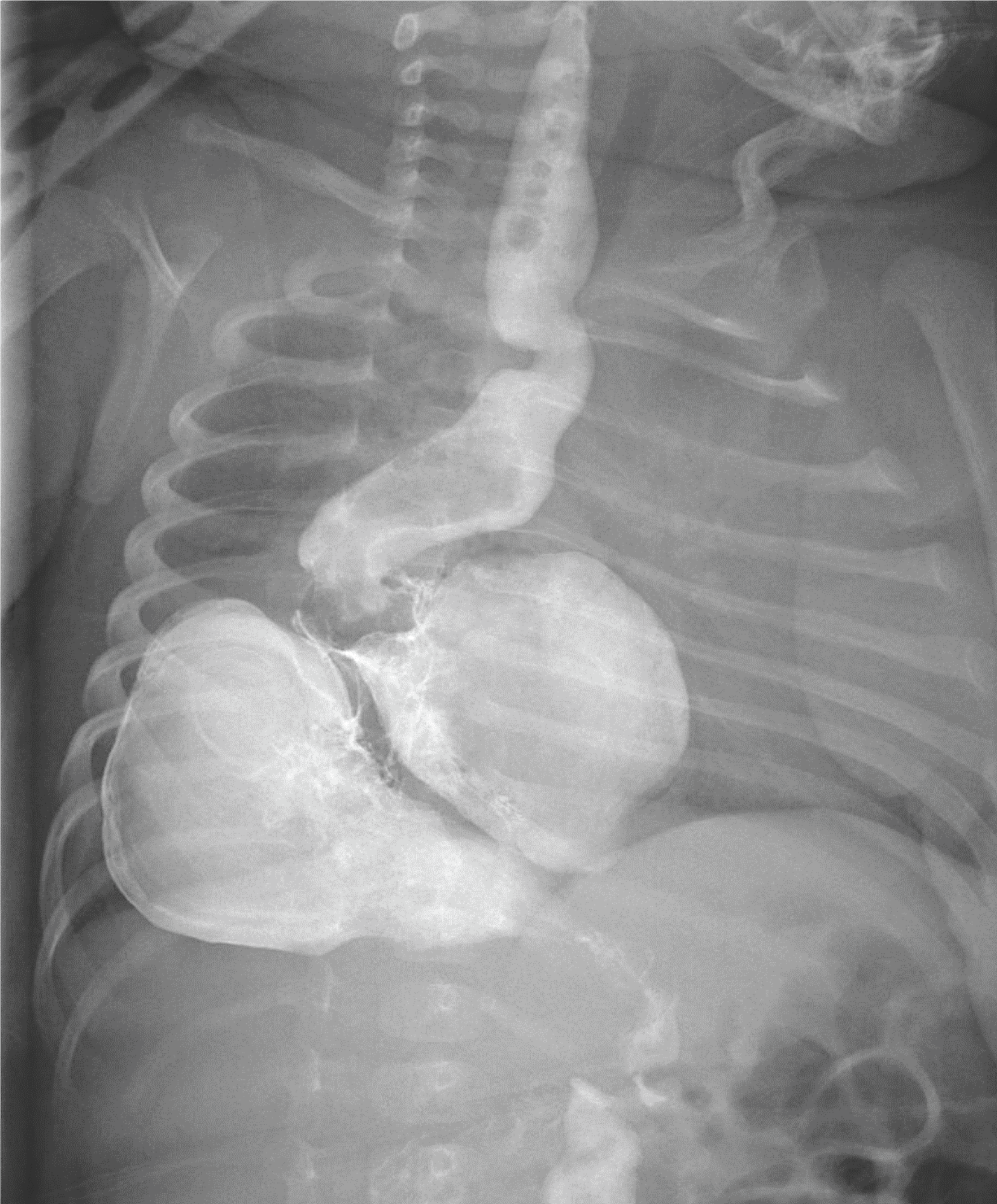
Table 1.
Characteristics of Congenital Diaphragmatic Hernia according to Timing of Diagnosis
| Timing of Dx of CDH | Number of cases | Clinical Manifestation | Site | Ref | ||
|---|---|---|---|---|---|---|
| Respiratory symptom | G-I symptom | Others | ||||
| Neonatal period <24 hours after birth | 28 | Respiratory distress (78.3%) | Death (10.6%) | L (82.1%) R (7.1%) | 18 | |
| 1 | Strangulation of herniated bowel (In utero) | L | 14 | |||
| 1 | Incarceration of herniated bowel (In utero) | L | 17 | |||
| 1 | Perforative peritonitis | Dextrocardia | L | 16 | ||
| ≥24 hours after birth | 1 | Gastric vovulus (on 5 days after birth) | H | 15 | ||
| 2 | Case 1: Pneumothorax (on first hour after birth) Diaphragm eventration† (on 5 days after birth) | Case 2: FTT, Mediastinal mass (on 30 days after birth) | L (case1) H (case2) | Present case | ||
| Childhood | 31 | Dyspnea, tachypnea (42%) | Vomiting, Abdominal pain (16%) | FTT (33.3%) Other anomalies (16.1%) | L (64%) R (26%) B (10%) | 11 |
| 362 | Dyspnea, Cough, URI (66.2%∗) | Vomiting, Abdominal pain (25%) | FTT (10.9%) Other anomalies (8.6%) Complications† (12.4%) | L (79.4%) R (0.6%) B (1.1%) | 12 | |
| 19 | Respiratory distress, URI (52.6%) | Vomiting, Abdominal pain (26.3%) | FTT (5.3%) | L (84.2%) R (15.8%) | 18 | |
| Adulthood | 1 | Epigastric pain, Vomiting | L | 13 | ||
| 3 | Vomiting, Nausea, Epigastric pain (Case 3) | Asymptomatic (Case 1, case 2) | L (Case 1, Case 3) | 9 | ||
| 1 | Chronic dyspnea with acute left sided chest pain | R (Case 2) L | 5 | |||
† Diaphragmatic eventration was spontaneously resolved. Abbreviations: Dx, diagnosis; Ref, references; CDH, congenital diaphragmatic hernia; G-I symptom, gastrointestina symptom; SGA, small for gestational age; US, ultrasound; FTT, failure to thrive; URI, upper respiratory infection; L, Left; R, right; H hiatal; B, both.




 PDF
PDF ePub
ePub Citation
Citation Print
Print


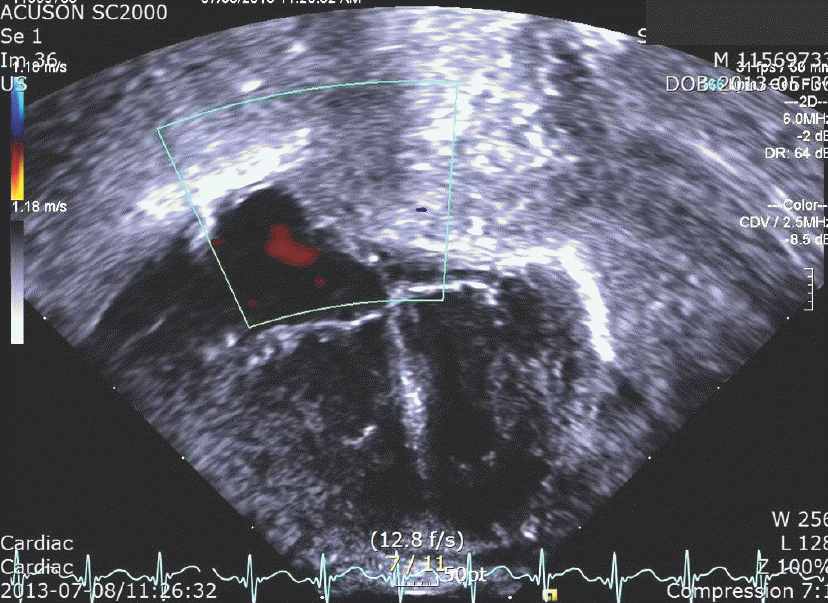
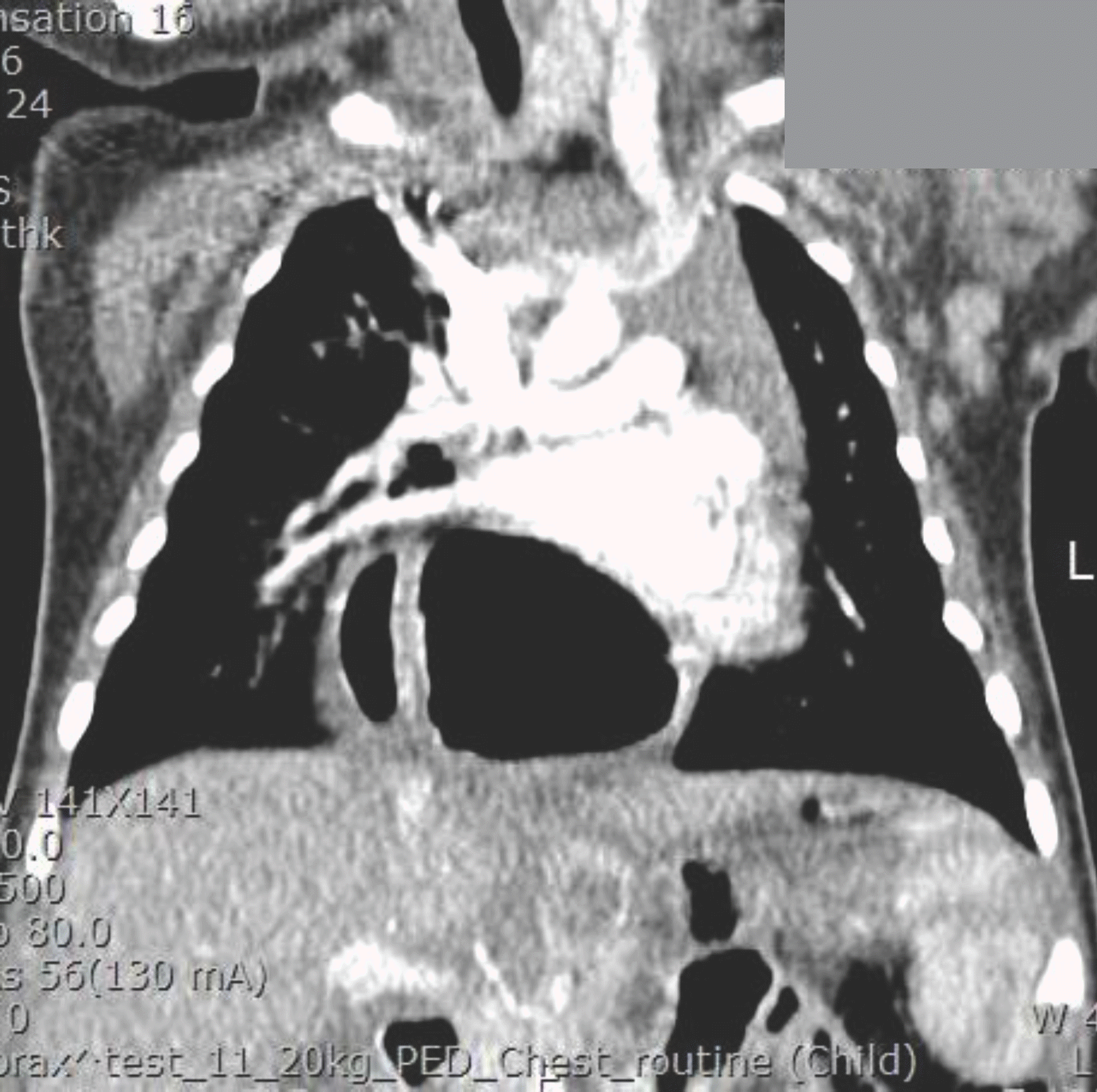
 XML Download
XML Download